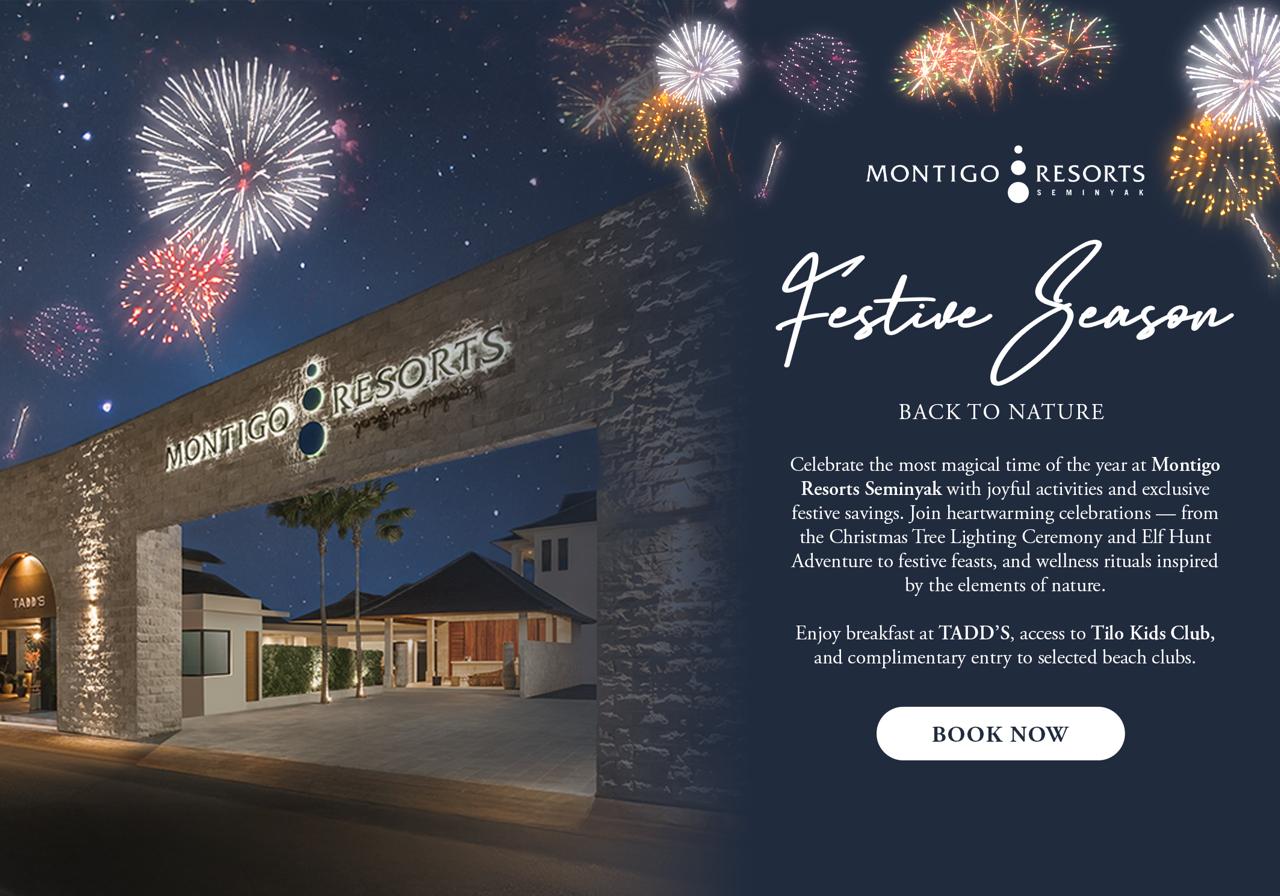How to Choose the Perfect Resort in Seminyak for Your Travel Style

Choosing the perfect Seminyak resort means aligning your travel style with the right neighbourhood, amenities, and overall value so your Bali stay feels effortless and memorable. Located on Bali’s southwest coast, Seminyak is known for its luxury stays, vibrant dining, boutique shopping, rejuvenating spas, and sunset beach clubs, making it one of the island’s most stylish destinations for every type of traveller.
Why Seminyak Is Ideal for Many Travel Styles
Seminyak’s mix of beach clubs, designer boutiques, and fine dining makes it a top choice for families, couples, wellness seekers, and digital nomads. Whether you are here for a short break or a long escape, a well-chosen Seminyak resort provides the perfect balance between beachside relaxation and lively urban convenience.
Seminyak neighborhoods at a glance
- Petitenget: Trend-forward dining, beach clubs, and sunsets, great for couples, friends, and those who want to be near the action
- Oberoi/Eat Street (Jalan Kayu Aya): Boutique shopping and café culture which is ideal for foodies and casual strollers
- Batu Belig: Quieter vibe but close to Petitenget and Canggu, good for families seeking balance
- Double Six: Lively beachfront sunset scene
Who Seminyak suits best
- Luxury travelers and couples who value dining and design-forward stays
- Families who want easy access to beaches, cafés, and activities
- Wellness seekers who prioritize spa, yoga, and healthy menus
- Digital nomads who appreciate reliable cafés, strong connectivity, and access to co-working
Resort Selection Guide
Choosing the right Seminyak resort involves matching your travel style, budget, and preferred location before you book.
1. Define your travel style
- Luxury: Private villas/suites, quality spa, beachfront or beach access, bespoke service
- Family: Family rooms/suites, child-friendly pools, flexible dining, proximity to activities
- Budget: Clean, central, walkable; essentials done well; fair price-to-location ratio
- Wellness: Spa quality, yoga classes/spaces, healthy menus, quiet rooms
- Adventure: Easy access to surf, day trips, and concierge support for activities
- Digital nomad/long stay: Consistent Wi‑Fi, work-friendly spaces, laundry, value dining
2. Set budget and dates
Rates fluctuate by season; with stronger demand and occupancy around the mid‑70% range in 2025, high season and holidays can book out quickly. Consider booking 4–8+ weeks in advance for peak months and explore flexible rate options.
3. Pick your preferred location radius
Decide whether you want to be on/near the beach or a short walk to Eat Street/Petitenget, or on a quieter lane with quick ride-hailing access. Balance convenience vs noise.
4. Prioritize amenities that matter
- Pools, spa, gym, on-site dining variety
- Room type and size, balcony/terrace, blackout curtains
- Beach access or beach club partnerships; on-site experiences
5. Read reviews strategically
Filter by “most recent” and “traveler type” on TripAdvisor, Google Reviews, and Booking.com. Look for consistent patterns in cleanliness, staff responsiveness, and maintenance.
6. Evaluate F&B and dietary options
- Breakfast inclusion and hours; kids’ menus
- Vegetarian/vegan/gluten-free options
- Late-night dining or nearby spots
7. Wellness and activities
- Quality spa menu and hygiene standards
- Yoga/meditation offerings and quiet spaces
- Proximity to surf, water sports, and day-trip operators
8. Connectivity and work needs
- Verified Wi‑Fi speeds; in-room desks and outlets
- Quiet corners and nearby co-working/cafés
9. Family-first features
- Shallow pool zones, baby equipment on request
- Adjoining/connecting rooms and flexible bedding
- Babysitting/childcare options
10. Accessibility considerations
- Elevators and step-free access; grab bars
- Shower configuration and doorway widths
- Confirm details in writing before booking
11. Booking strategies
- Compare direct-booking perks (transfers, spa/dining credits, meal plans) vs OTAs
- Review cancellation/change policies
- Account for taxes, fees, and airport transfer costs
Travel Styles Deep Dive
Each travel style benefits from a different set of amenities, locations, and services, balancing comfort, convenience, and value.
Luxury travelers
Prioritize beachfront or near-beach access, expansive suites or villas, high-touch service, fine dining, and refined spa experiences. Trade-off: higher rates and the need to book earlier in peak months. Example: The Legian Seminyak is frequently cited in luxury roundups for its beachfront position and service-led experience.
Family-friendly travelers
Look for larger rooms or suites, child-friendly pools, proximity to beaches and attractions, early dining, and baby gear on request. Trade-off: busier public spaces; choose room placement (quieter wings/floors) to manage noise.
Budget-conscious travelers
Target a strong location-to-price value, clean rooms, friendly service, and walkability to reduce transport costs. Trade-off: fewer inclusions like spa discounts or beach club tie-ins.
Wellness seekers
Focus on spa quality and hygiene, therapists’ expertise, yoga/meditation spaces, healthy dining, and quiet room orientation. Trade-off: often located slightly away from nightlife to preserve tranquility.
Adventure enthusiasts
Prioritize easy surf/beach access, a concierge that can arrange transfers and activities, plus early breakfast or grab-and-go options. Trade-off: you may choose simpler relaxation amenities to stay close to the action.
Digital nomads/long-stay guests
Seek consistent Wi‑Fi, laptop-friendly workspaces, blackout curtains, laundry access, and value dining or kitchenette access. Trade-off: fewer resort “extras” in exchange for efficiency and comfort.
Reviews, Ratings, and Reality Checks
The best predictor of today’s experience is recent, verified guest feedback from travelers like you.
Platforms to trust and how to filter
- TripAdvisor: Filter by traveler type (family, couple, solo) and “most recent”
- Google Reviews: Prioritize recency and look for management responses
- Booking.com: Verified stays add credibility; read both high and low ratings
Green lights vs red flags
- Green lights: Consistent praise for cleanliness, staff warmth, accurate room photos, and quick problem resolution
- Red flags: Repeated maintenance issues, noise complaints, or slow response to guest concerns
How to read management responses
Look for specific fixes, transparent timelines, and a constructive tone. Specific remedies and follow-ups signal an improving guest experience.
Trends and Statistics to Inform Your Choice
Growth and new traveler segments are shaping what “best” means in Seminyak today.
Visitor growth and occupancy
Seminyak and greater Bali have experienced strong tourism recovery in the last two years. Local tourism updates indicate meaningful increases in arrivals, with Seminyak resorts averaging around mid‑70% occupancy in 2025.
Digital nomad appeal and long stays
With better connectivity and café culture, Seminyak continues to attract remote workers. Expect rising demand for reliable Wi‑Fi, quiet workspaces, and longer-stay offers.
Common Mistakes to Avoid
- Overlooking location vs noise trade-offs (near beach clubs vs quiet lanes).
- Ignoring taxes/fees and transfer costs when comparing rates
- Relying on old photos and outdated reviews, always read the latest 10–15 reviews
- Skipping flexible cancellation during shoulder/monsoon seasons
- Not confirming family or accessibility needs in writing (cribs, adjoining rooms, step-free access)
Seasonal and Itinerary Considerations
Your ideal resort can change by month, weather, and planned activities.
- Best months: Dry season (roughly May–September) is sunnier and busier; book earlier. Shoulder months can offer value with manageable weather
- Events and peak periods: Bali holidays, school breaks, and festival weekends can drive occupancy and rates upward
- Stay length and day trips: 3–5 nights for a taste of Seminyak; 6–8+ nights to combine with Ubud, Uluwatu, or Nusa islands. Day trips to Uluwatu, Tanah Lot, Canggu surf, and Ubud rice terraces are easy from Seminyak
Accessibility, Safety, and Wellness Basics
A safe, comfortable stay hinges on property accessibility, health standards, and local safety awareness.
- Mobility: Confirm elevator access, step-free pathways, and in-room safety features if needed
- Spa hygiene: Look for clear sanitation protocols, reputable products, and trained therapists
- Beach and transport: Observe flag conditions at the beach; use licensed drivers or reputable ride-hailing; confirm hotel taxi rates before booking
Final Checklist and Booking Flow
Use this 10‑point checklist to confirm your choice before booking:
- Travel style match (luxury, family, budget, wellness, adventure, digital nomad)
- Neighborhood fit (Petitenget, Oberoi/Eat Street, Batu Belig, Double Six)
- Room type and size (balcony/terrace, bed setup, quiet orientation)
- Verified Wi‑Fi and work setup (if needed)
- Pools, spa, gym, and on-site activities
- Dining: breakfast inclusion, dietary options, hours
- Family or accessibility needs confirmed in writing
- Sustainability practices you value
- Flexible cancellation/change policy
- Total trip cost (with taxes, fees, airport transfers)
Conclusion
The ideal Seminyak resort brings together location, comfort, and thoughtful design for a truly memorable Bali experience. Whether you are seeking a romantic hideaway, a wellness retreat, or a family escape, Seminyak offers refined resorts that meet every expectation. With careful research and the latest reviews, you can book confidently and enjoy one of Bali’s most iconic coastal destinations.
